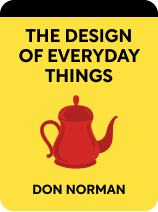

This article is an excerpt from the Shortform book guide to "The Design of Everyday Things" by Don Norman. Shortform has the world's best summaries and analyses of books you should be reading.
Like this article? Sign up for a free trial here .
What are Norman doors? How do they violate the basic principles of design, and why does it matter?
Norman doors, or emergency doors, serve as a great example of discoverability and adaptation in design. Since we encounter so many doors in our lives, the Norman door serves as a single standard for emergency exits.
Keep reading to find out how the Norman door is a successful example of design.
Discoverability
Physical, cultural, semantic, and logical constraints aid in discoverability. This section applies these concepts to common objects like doors, switches, and faucets.
Norman Doors
Doors are infamous examples of bad design that we encounter in everyday life. In the first edition of this book, Norman laid out the concept of “discoverability” and showed how a huge portion of modern doors violated this principle. This section of the book was revolutionary in the design community, and was the first exposure many designers had to the idea of discoverability and the importance of user experience. The door example became so popular that confusing, poorly-designed doors are now often referred to as “Norman doors.”
In contrast to Norman doors, modern emergency doors are examples of discoverability done right. In the past, emergency fire exit doors often opened inward. People rushing to get out of the building instinctively pushed against the doors and often became trapped. Now, the law requires emergency doors to open outward, and to be equipped with a panic bar. Unlike a regular door handle or a smaller metal plate, a panic bar spans almost the entire width of the door. It’s immediately visible and doesn’t require dexterity or precise movements to open. In other words, panic bars are highly discoverable.
This shows how important the Norman door is to people, and how design can change the way we interact with an object. By being highly discoverable, the Norman door solves problems for function and for safety and became a better design.

———End of Preview———
Like what you just read? Read the rest of the world's best book summary and analysis of Don Norman's "The Design of Everyday Things" at Shortform .
Here's what you'll find in our full The Design of Everyday Things summary :
- How psychology plays a part in the design of objects you encounter daily
- Why pushing a door that was meant to be pulled isn't your fault
- How bad design leads to more human errors






